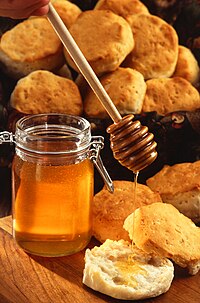
Photo from wikipedia
A blend of four volatile compounds, (Z)‐3‐hexene‐1‐yl acetate, α‐pinene, sabinene and n‐heptanal, emitted from cabbage plants infested by diamondback moth (DBM) larvae (hereafter called the attractant) attract females of Cotesia… Click to show full abstract
A blend of four volatile compounds, (Z)‐3‐hexene‐1‐yl acetate, α‐pinene, sabinene and n‐heptanal, emitted from cabbage plants infested by diamondback moth (DBM) larvae (hereafter called the attractant) attract females of Cotesia vestalis, a dominant parasitoid wasp species of DBM larvae. Here, we tested the effects of the presence of uninfested komatsuna (Brassica rapa var. perviridis L. cv. Rakuten) plants on the wasps’ response to the attractant in the choice chamber under laboratory conditions. Satiated female wasps were equally distributed between groups of 16 and four uninfested plants. However, the wasps preferred the group of 16 uninfested plants with the attractant to that of four uninfested plants with the attractant, indicating that the greater biomass of uninfested plants synergistically increased the attractiveness of the attractant. The effects of honey (a food of C. vestalis while rearing) on the wasps’ responses to the attractant were also tested using starved females. The wasps showed an equal distribution between honey with four uninfested plants and four uninfested plants. When both odour sources were coupled with the attractant, the wasps significantly preferred the former odour source, indicating a synergistic effect of honey on the attractiveness of the attractant. This effect, however, was observed when C. vestalis females had been reared with the tested honey but not when they had been reared with aqueous sucrose. In the experimental glasshouse, when comparing a group of infested plants coupled with uninfested plants, honey and the attractant to a group of infested plants, female wasps preferred the former. In addition, this preference was significantly greater than their preference for infested plants coupled with the attractant over infested plants. Thus, there was a synergistic effect of uninfested plants and honey on the attractiveness of the attractant–infested plant complex under glasshouse conditions.
Journal Title: Journal of Applied Entomology
Year Published: 2018
Link to full text (if available)
Share on Social Media: Sign Up to like & get
recommendations!